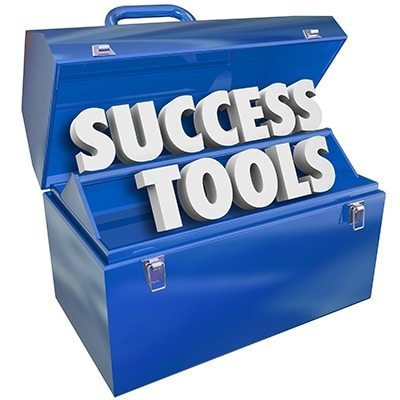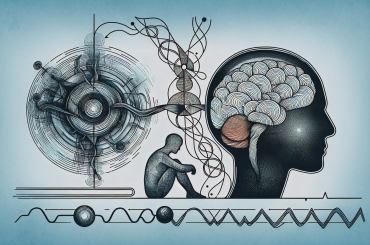Pretty much every recovering addict knows about 12-step meetings, sponsorship, working the steps, and going to therapy. And much of the time those tools are enough to establish and maintain early sobriety. Over time, however, addicts inevitably encounter situations where those highly useful forms of support are not available. In such cases, it is wise to have at least a few other tools of sobriety on which to rely. A few of my favorites include:
- Self-Check-Ins (aka, HALT): HALT is a recovery acronym for Hungry, Angry, Lonely, and Tired. Any of these issues can trigger an addict toward relapse. (Even non-addicts tend to struggle and behave badly when hit with hunger, anger, loneliness, and/or exhaustion.) In my own recovery, I find that when I’m triggered toward relapse the first thing I need to do is HALT and ask myself: When is the last time I ate? Am I angry at or in conflict with someone? Would a few minutes spent talking with a person who understands me help me feel better? Did I get enough sleep last night? More often than not, a catnap, a candy bar, or a five minute phone conversation will greatly diminish my desire to re-engage with my addiction.
- Bookending: Sometimes addiction triggers can be spotted in advance. For instance, a social engagement where people will be drinking alcohol—be it a work event, a wedding, a neighborhood party, or whatever—is an obvious potential trigger for relapse. Recognizing this, addicts can “bookend” these events with phone calls to their therapist, their 12-step sponsor, an accountability partner, or any other person who supports their recovery. Typically, during the “before” call I tell my supporter about the upcoming event, and I commit to maintaining my sobriety. I also ask for suggestions on avoiding relapse. Later, after the event, I check in with the same person to confirm that yes, I stayed sober, and to discuss what happened, what feelings came up, and what I might want or need to do differently next time.
- The Three-Second Rule: Addicts cannot control the thoughts they have or the fact that they sometimes feel triggered toward relapse. What addicts can control is what they do with these thoughts. For instance, after recognizing an addictive thought, addicts can give themselves three seconds to turn away from it and focus on something else. Usually this works best if they simply ask their Higher Power for the problematic idea to be removed. “Turning it over” in this way even works for addicts who struggle with the concept of God or Higher Power, probably because the simple act of thinking about something else, anything at all, temporarily breaks the addictive cycle. Sometimes I advise newly recovering addicts to loop a rubber band around their wrist, snapping it when triggered to cause a small jolt of pain that will help them break away from an addictive thought. At times the three-second rule, however it is applied, helps for only a few moments. One unwanted idea is banished, and almost immediately another arrives. In such cases, the three-second rule can be used repeatedly—and this is actually a blessing, as practicing the three-second rule over and over eventually decreases the power of an addict’s triggers (because those triggers are not reinforced/rewarded with relapse).
- Gratitude: Without doubt, gratitude is my go to tool. For me, writing a ten item gratitude list counteracts almost any addiction trigger. A side benefit of gratitude is that it promotes happiness. Grateful people are happy people. Grateful people also tend to be less stressed-out, less likely to wallow in shame and depression, more hopeful, and more likely to recover from an addiction.
- Healthy Fun: Over time, addictions must be replaced not just with recovery tasks (12-step meetings, step work, therapy, and the like) but with enjoyable non-addictive activities. In other words, recovering addicts need to have some fun once in a while, and the best time to do this is when they feel triggered. In early sobriety, some addicts write down a list of things they enjoy—playing games with their kids, seeing a movie with their spouse, taking a spin class at the gym, going for a hike, yoga, meditation, reading a book, journaling, going to a ballgame with friends, etc. When triggered, addicts can simply pull this list from their wallet, pick whatever activity seems most enjoyable or available at that moment, and go for it. Over time, these conscious healthy actions become unconscious healthy habits that addicts automatically turn to instead of their addiction.
The above list of recovery tools is hardly the be-all, end-all for every recovering addict. There are many other tools that you may wish to include in your personal recovery toolbox. If it’s healthy and it works for you, put it in your kit and pull it out whenever you need it, and don’t worry if it’s useful to others. I would, however, caution that at least a few of your tools should involve other people. After all, the addicts who do best in recovery are those who are willing to involve supportive people in their process of healing—making friends in 12 step and therapy groups, making and taking recovery related phone calls, fully engaging in 12 step and therapy meetings, being of service to other recovering addicts, etc.
For more information about healing from addiction, check out my website. For treatment referrals, click here, here, or here.








8 Comments
Great to read and very informative and helpful thanks
FAB
Great advice. Especially useful during the holidays!
Confirmation of the time I have spent in recovery. The challenge is daily. This is a difficult and great resource.
Very helpful. Thank you.
Thanks! My experience is that the three-second rule probably should be a one-second rule!
Great article! You really got to the heart of triggers and how to manage them to prevent relapse. HALT is a good one for me.
Your article compliments my Hope for the Holidays blogs to help keep our recovery strong during the holidays posted at http://www.recoveryartstudio.com
Thx! Robin G.
Recovery date 2/6/91
Great reminders, thank you.